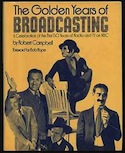We may be in the age of smart phones, tablet computers, and e-readers, but in sheer numbers, one household device still rules: television.
Today in the United States, there are 2.86 TVs for every 2.5 people. More than half of U.S. households have three TVs. Yet the story of how television became ubiquitous in the American landscape remains mostly fragmented. There are several intertwining threads, including the narrative of technological development at individual manufacturers (especially RCA in the US), the development of appealing programming and a wide viewership, and the emergence of key institutions of contemporary market culture, notably mass advertising. Books and articles have been devoted to each of these, and there are a handful of institutions with excellent websites that provide further insight and documentation. (See here, here and here.) But an adequate history of the rise of television, and the consumer electronics industry itself, requires a comprehensive work of synthesis that so far has proved elusive.
 TV is a major component of the twentieth century American experience, shaping and reflecting both our own self-understanding, and the understanding of America around the globe. Surprising then that there seems to be relatively little collecting interest for printed materials from the years of television's incubation and infancy. In part this may be due to the technical nature of the story during the 1920s and '30s, in which improvements in electronic image capture and image display were published in science and engineering journals. But much useful information also appeared in specialty books (for instance here, here & here) and publications for DIY enthusiasts, including Popular Mechanics, The Manual of Ultra Short Wave Radio, and QST.
TV is a major component of the twentieth century American experience, shaping and reflecting both our own self-understanding, and the understanding of America around the globe. Surprising then that there seems to be relatively little collecting interest for printed materials from the years of television's incubation and infancy. In part this may be due to the technical nature of the story during the 1920s and '30s, in which improvements in electronic image capture and image display were published in science and engineering journals. But much useful information also appeared in specialty books (for instance here, here & here) and publications for DIY enthusiasts, including Popular Mechanics, The Manual of Ultra Short Wave Radio, and QST.
The technical literature and related printed materials from the decade leading up to the introduction of commercial TV generally are not rare; indeed, most tend to be modestly priced. There are exceptions, however. In 2009 Swann Galleries in New York sold a collection of more than 125 photographs, some of which documented pioneering experiments in television transmission by Russian-American engineer Vladimir Zworykin, who is often credited as the foremost inventor of the electronic television system. The lot went for $15,600 with the premium.

In the United States, the 1939 World's Fair in New York marked the beginning of sustained television broadcasts. The Radio Corporation of America (RCA), itself the creation of four major US corporations (General Electric, Westinghouse, AT&T, and United Fruit), spent tens of millions of dollars during the Great Depression to bring television within the reach of an upper income family. The first American commercial broadcasts, limited to a tight radius around New York City, were accomplished by the National Broadcasting Corporation (NBC), a partnership created by RCA, Westinghouse and General Electric. But even as RCA was the dominant player in the US, more than 30 other American and European firms were developing or manufacturing televisions or prototypes. By the end of1941, 7000 TV sets were in use in America. Only Britain had more, with an estimated 19,000 sets in use. Telefunken, a joint venture of industrial giants Siemens and AEG, also pressed full ahead in Germany. The Second World War brought any further innovation, or even sales of TVs, to an abrupt halt.
 After the war, the long recovery in Europe meant that British and Continental consumers had to wait more than a decade before TV became widely available. Not so in the US where nearly 200 firms embarked on the manufacture and sale of TVs, the great majority of which began in business between 1948-1952. This was the beginning of television's so-called “Golden Age.” Firms large and small vied for a piece of the rapidly growing market for television sets. Not surprisingly, large won.
After the war, the long recovery in Europe meant that British and Continental consumers had to wait more than a decade before TV became widely available. Not so in the US where nearly 200 firms embarked on the manufacture and sale of TVs, the great majority of which began in business between 1948-1952. This was the beginning of television's so-called “Golden Age.” Firms large and small vied for a piece of the rapidly growing market for television sets. Not surprisingly, large won.
The corporate contenders can best be viewed in newspaper and especially colorful magazine advertisements of the era. RCA, the early leader in television, began placing print ads in New York newspapers as early as 1939. Magazines such as Life (1883-1972), the Saturday Evening Post (1897-1971), Collier's (1888-1957), The New Yorker (1925-present), and Look (1937-1971) were particularly effective for advertisers seeking to reach large numbers of readers. Print ads (such as the ones shown in the links above) tend to be sold as cut-outs from the magazines. This type of material is sold in quantity on eBay, usually for little money.
The first commercials hit the airwaves on July 1, 1941 when advertisers Proctor & Gamble, Lever Brothers, Sunoco, Bulova Watch Co., and Missouri Pacific Lines (railroad) each sponsored a different program on WNBT (later WNBC) in New York. A trade paper correctly forecast that television “is reckoned by many advertising men to have the greatest potential selling power” of all media.
 Uncommon program cards mailed to TV station subscribers date from as early as 1939. Television programing that year averaged less than 15 hours per week, mostly in the afternoons and evenings. The amount of daily broadcasting grew little over the next several years. Programs included sports, news, teleplays, interviews and lectures, live entertainment and variety shows – recognizably familiar staples of viewers even today. The cards often included opinion surveys to gauge viewer response on the program content.
Uncommon program cards mailed to TV station subscribers date from as early as 1939. Television programing that year averaged less than 15 hours per week, mostly in the afternoons and evenings. The amount of daily broadcasting grew little over the next several years. Programs included sports, news, teleplays, interviews and lectures, live entertainment and variety shows – recognizably familiar staples of viewers even today. The cards often included opinion surveys to gauge viewer response on the program content.
 Brochures from a variety of sources promoted commercial TV as well, especially in the first years. Other types of printed ephemera in various collections include many scripts, photographs and stills, production materials, station records, and personal papers.
Brochures from a variety of sources promoted commercial TV as well, especially in the first years. Other types of printed ephemera in various collections include many scripts, photographs and stills, production materials, station records, and personal papers.
In particular, the early history of television lends itself to a contextual approach, cutting as it does across a number of areas of collector interest, including technology, business and advertising history, illustration, publishing, photography, and entertainment. There are a number of outstanding institutional archives and museums that possess deep collections on various aspects of this history, but no one place has brought it all together. Indeed, as materials in these archives become fully digital and available online, entirely new perspectives on the meaning of the age of electronics may begin to emerge. For beginning collectors with limited resources, the history of television remains an accessible and open area of investigation, with a potential for reward that is not yet exhausted.







